Why Do Diamonds Glow Under Black Light?
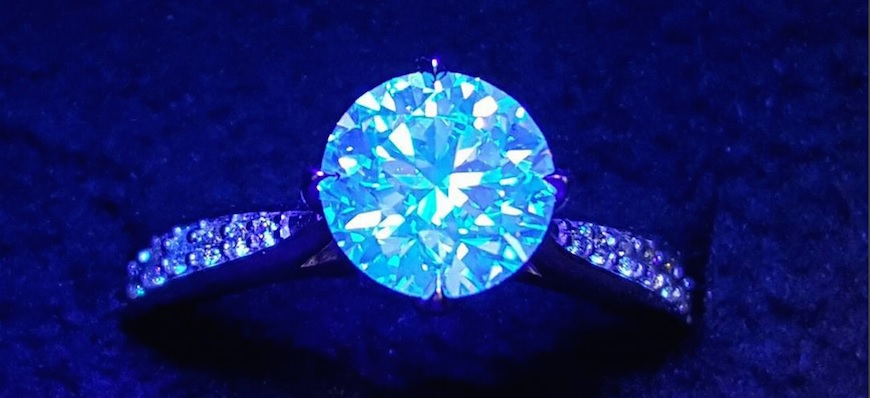
A diamond ring glowing in a bluish color under UV light.
Diamonds are elusive and beautiful gemstones that have captivated many people for their brilliance and sparkle factor. But there is another aspect of them that isn’t talked about frequently and this may sound bizarre to some of you.
Did you know that diamonds can glow in a variety of colors under black light? If you are curious to know why and how it can affect you when shopping for a diamond engagement ring, you are in the right place.
In this write up, we will explain how and why some diamonds have this peculiar ability to glow in the dark. You will also find out how to use this phenomenon to your advantage when shopping for a diamond ring.
Why Do Diamonds Glow Under Black Light?

Diamonds glowing in blue, green and yellow hues in black-lighting.
Diamonds glow in black lighting due to a phenomenon called fluorescence and roughly 35% of natural diamonds exhibit some degree of this effect. In nature, the presence of certain chemical impurities within the diamond’s composition triggers this glowing effect in the presence of an ultraviolet light source.
It is estimated that 95% of natural diamonds with fluorescence will glow in a bluish color. Interestingly, diamonds can also glow under black light in a variety of other colors ranging from yellow, white, red, green and orange.
Gemological labs like GIA or AGS will assess a diamond’s fluorescence intensity during the grading process and identify its intensity according to the following categories: None, Faint, Medium, Strong and Very Strong.
In the strong and very strong category, the presence of fluorescence can sometimes be observed in common sources of UV lighting like the sun. This can lead to a cloudy or blurry appearance when the diamond is viewed directly under strong sunlight.
Is Fluorescence a Good or Bad Thing?
In the current market, fluorescence is often viewed as a form of “defect” and these diamonds are often sold at a discount. Personally speaking, I find this odd because fluorescence may actually be a good thing depending on your own values and perspective.
Let’s start with the negatives of buying a diamond with fluorescence. I will also address some of the common misconceptions that people have about fluorescent diamonds.
The downside to buying a diamond with fluorescence is that you may end up with a diamond that is cloudy or hazy looking. In the industry, we call this an “overblue” stone and the diamond has a distinct milky appearance that a casual observer can easily see.
While this is often portrayed to be a prevalent problem with diamonds that have strong or very strong fluorescence, it actually isn’t such a widespread issue that people think it is. Based on the statistics I’ve collected, this happens to roughly 2-3% of colorless diamonds (D, E, F) with strong/very strong fluorescence.
An overblue diamond that looks milky – GIA #2196310203
One misconception people have is that diamond fluorescence negatively affects a diamond’s sparkle and beauty. The truth is that sparkle and brilliance are determined by cut quality and not by whether the diamond has the ability to glow in black lighting.
Likewise, many people wrongly believe that fluorescence will adversely impact the durability of a diamond. While fluorescence is caused by chemical impurities in the diamond’s lattice structure, it doesn’t weaken the diamond’s hardness or strength.
So, how can fluorescence be a good thing?
Well, there are plenty of reasons to like it beyond the cool looking effect it generates when glowing in black light. First of all, diamonds with fluorescence are sold at a discounted price ranging from 5%-25% because of unfavorable market forces.
As a smart shopper, you can take advantage of this mispricing to save money when shopping for a diamond ring.
In the 2 examples above, both diamonds are well cut diamonds with similar carat weight, D color and VVS1 clarity grades. The difference between them is that the cheaper diamond has fluorescence while the more expensive one doesn’t. Visually, both diamonds will look identical and yet, there is a massive 30% price difference between them.
One other practical benefit of buying a diamond with fluorescence is that it can help improve the color appearance of diamonds in the lower color ranges. Blue fluorescence can help a diamond look whiter by counteracting the yellowish tint a diamond has and it can improve the face up view by half to one whole grade higher.
At the end of the day, fluorescence is a really subjective characteristic that depends on individual taste.
There’s nothing inherently wrong in buying a diamond with fluorescence and it is also perfectly fine if you don’t like it. What matters is that you are making your decision based on facts and not fear-mongering bullshit to push you away from buying a fluorescent diamond.
Is This a Reliable Test to Know If the Diamond is Real or Fake?

There’s a lot of misinformation being peddled on the Internet which claims that you can identify whether a diamond is real or fake based on fluorescence. For the record, fluorescence should NEVER be solely used as a criterion to determine a diamond’s authenticity.
Statistically, about a third of natural diamonds fluoresce while the majority don’t. If you are someone who is logical and can think rationally, how would it be possible to determine if a diamond is real or fake because of fluorescence?
If a gemstone doesn’t glow in dark lighting, it could fall into the category of natural diamonds that don’t have fluorescence. And you are back to square one. Likewise, you cannot jump to a conclusion that the unidentified gemstone is a diamond just because it has fluorescence. There are plenty of other minerals and gemstones that display fluorescence!
Do Lab Diamonds Glow in UV Lights Like Natural Diamonds?

Lab grown diamonds under black light with different fluorescent hues – GIA.
Yes. Lab grown diamonds can display fluorescence too and this is caused by submicroscopic structures within the crystal during the growing process. Similar to natural diamonds, blue fluorescence is the most commonly observed color in lab diamonds due to the presence of nitrogen impurities.
Depending on the specific recipe and alloys that are used in the culturing process, lab diamonds can display rarer colors of fluorescence like orange-yellow or white compared to natural diamonds.
Fun fact: If you are wondering why most diamonds glow blue, that’s because of nitrogen atoms being aligned in the carbon lattice of the diamond. But why nitrogen? Well, that’s because it is the most abundant element in our atmosphere!
Where to Buy Diamonds With Fluorescence Reliably?
When it comes to buying diamonds with fluorescence, Brian Gavin is a retailer that is well known for their signature super ideal cut diamonds. They have a specific line of diamonds called the “Brian Gavin Blue” that offers exceptional diamonds with medium – very strong fluorescence intensities.
The best part is that each diamond in the Blue line is physically inspected by Brian Gavin to ensure that they are cut with the best precision and proportions for light performance and have no ill-effect from fluorescence.
Summary – Are You Still Worried About Diamonds That Glow?
I hope this article has helped you gained a better understanding of why diamonds glow in black light and addressed some of the polarizing views that people have about fluorescence.
To recap, fluorescence can have a negative impact on a very small percentage of diamonds but the market is pricing them as if every single fluorescent stone is bad. The key here is to know what you are buying and to inspect a diamond before you buy it.
Diamonds that are negatively affected by fluorescent have milky appearances that are very obvious to even the casual shopper and can be avoided easily.
Personally, I love fluorescence as it gives the diamond a unique characteristic that is cool for showing off. It is also a cost-effective way to improve the color of a diamond without any extra cost!
On a final note, don’t be afraid of asking questions when shopping for a diamond. A good jeweler will be able to deal with and address any concerns you might have about diamond fluorescence. Good luck!
Related Articles
Leave A Comment


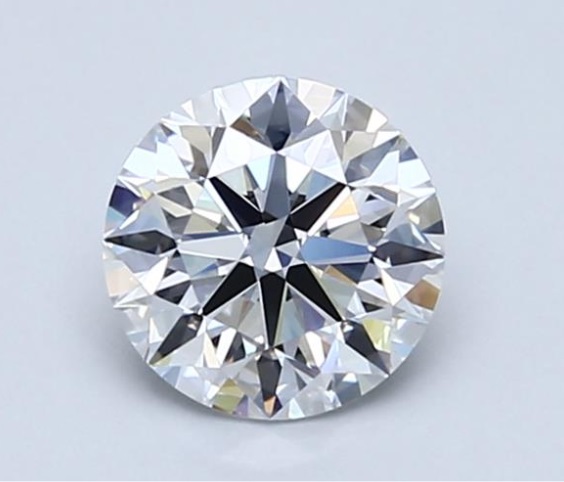
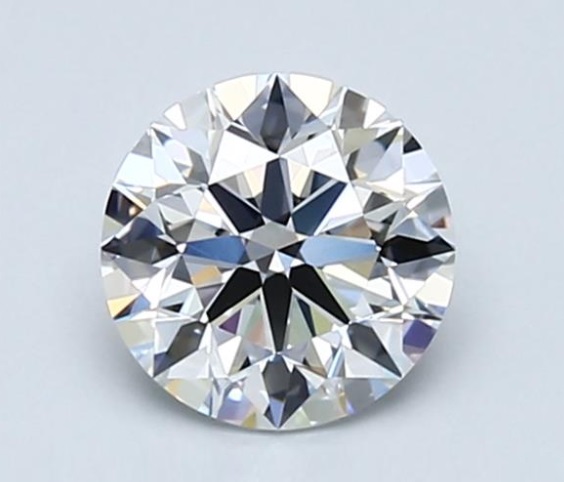
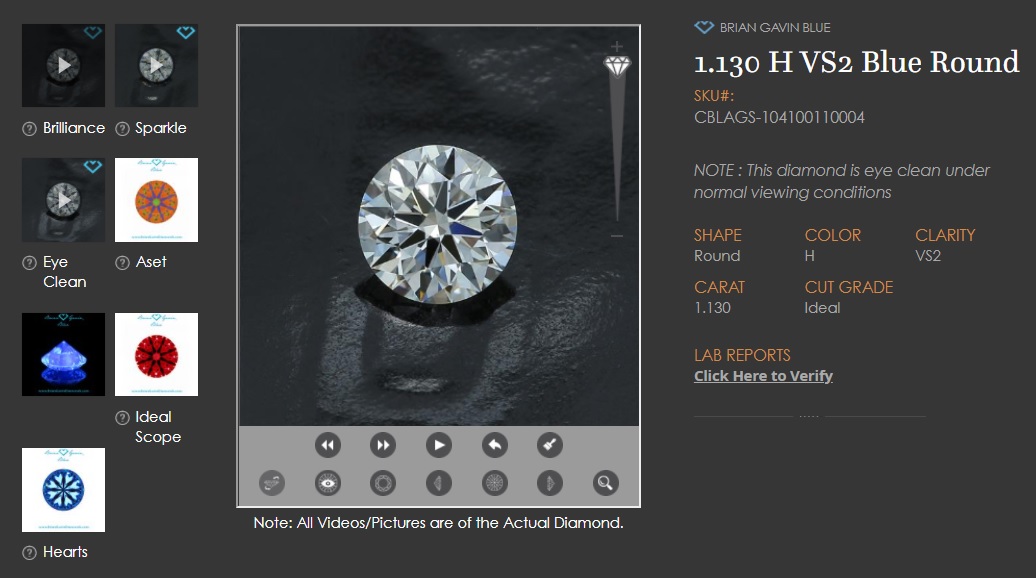



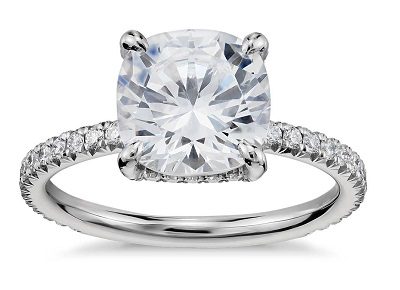









12 Comments
Recently, I noticed a few of the smaller diamonds on my wedding ring turning blue in a UV scanner and it got me worried. I started googling the question: What does it mean if your diamond glows in backlight? I found that this was caused by fluorescence and I was more at ease after reading your blog. Some sources say that the blue diamonds could be real while some say that if a diamond turned blue, it is not of high quality. Do diamonds that fluoresce blue better than those that don’t? I didn’t know that I had fluorescent diamonds in my wedding ring as it wasn’t disclosed by my jeweler when I bought it.
In the market, diamonds with very strong or strong blue fluorescence are often “looked down” on because they are often perceived to be hazy and are cheaper. Fluorescence shouldn’t be an indicator of a diamond’s quality but rather, should be viewed as a characteristic. So, whether a diamond that fluoresces is better really lies in the eye of the beholder.
Now, with regards to the part on disclosure, I am assuming that you are referring to small diamonds (melees) found in your ring. These are normally ungraded diamonds as they are too small to make economical sense for individual grading. When these diamonds are sorted, they are usually done based on size/color/clarity. The presence of fluorescence is usually not taken into account and that’s why it is normal to see some stones that will glow in the dark UV lights while others are completely non reactive. I won’t be too worried in this case.
Thank you for this interesting article. I have a major in Physics and fluorescence is a topic that interests me. The UV light diamond test is a good way to quickly weed out CZ fake diamonds if the diamond glows. That’s because when photons from UV sources hit the diamond, the impurities found in the diamond will make it emit the glow and it isn’t present in CZ which is a common fake that scammers use to imitate diamond.
Ok. I get your point but what happens in this case? You have a case of 2 unidentified gemstones with one being a CZ and the other being a diamond. Under UV black lighting, both are inert and don’t glow. So, how do you tell which is the real diamond? That’s the point I’ve been making in this article. A lack of fluorescence doesn’t help you ascertain or identify a gemstone.
Do real diamonds glow under black light if I were to buy a cheap UV source from eBay or Amazon? I am asking because the GIA certificate of the diamond that I have states None but when I shine on the diamond ring I bought with the torch, it seems to be glowing. This makes me worried that the diamond I bought had been swapped and I was duped by the seller.
I hope I am understanding you correctly with regards to your queries. First of all, you can check the authenticity of the diamond you have by matching the inclusions to the clarity plot in the diamond. You can also make use of the inscription on the certificate to see if you can find a corresponding number on the diamond’s girdle.
Now, diamonds react differently to different wavelengths of UV light. In the lab, all diamonds are graded with bulbs that emit 365nm of UV light. Some of the cheaper UV sources that are bought online can have shorter or longer wavelengths. These may trigger some reaction from the diamond even if the diamond has no fluorescence observed at 365nm. If your diamond checks out, I suspect that you are seeing reflections instead of the emission of the UV light from your diamond when it is mounted. In the lab, diamonds are graded face down to reduce errors caused by reflections of light.
Very interesting article. I have a question. My diamond glows purple under black light instead of blue or the other colors you mentioned. Is this something I should be concerned with?
I think your diamond should have blue fluorescence. It may look like the diamond glows purple under black light because the source itself is a little purplish looking. Depending on the type of bulb used in the UV light, there can also be some color differences which may cause you to see it as being purple. I won’t be worried at all. In fact, sometimes people mistake a diamond for having fluorescence when it doesn’t. The facets of a diamond can reflect some of the purplish looking UV light into our eyes which may wrongly cause people to think the diamond is emitting light when it is reflecting it.
I have a rock collection and I need to know how and where to go to find if I have any raw gems among my collection. Who to trust to get the truth. Thank you and I appreciate any feedback.
Find someone knowledgeable who shares the same interest. Rockhound forums are great places to start and some people can be helpful even if you post some photos of your collection. You can also consider taking up courses offered by GIA.
My question is.
Do raw diamonds show colors inside it when see with a UV light ?
The thing is that I have a raw diamond (not sure yet) that I see it under a magnified glass with an UV light, and I can see very clear a red, green, yellow spots in it and of course the gray and white too. Just need to know if this is a good sign to be a real diamond.
Than you.
Rough diamonds do fluoresce but just because a stone exhibit fluorescence, it doesn’t mean anything or confirms the identity of the unknown stone. Use a range of methods like using a Presidium diamond tester as well as louping the stone to look for features distinct to diamond formation.